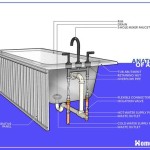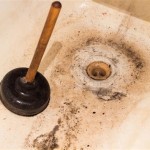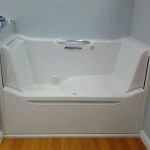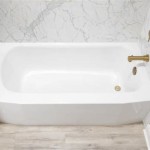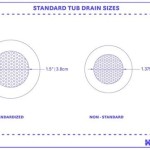Kohler Bathtub Faucet Parts: A Comprehensive Guide
Kohler is a renowned manufacturer of plumbing fixtures, including bathtub faucets, known for their durability, stylish designs, and innovative technology. Understanding the various components that constitute a Kohler bathtub faucet is crucial for maintenance, repair, and replacement purposes. This article offers a detailed exploration of Kohler bathtub faucet parts, covering their functions, common issues, and essential considerations for their upkeep.
Bathtub faucets serve as the primary point of water delivery to a bathtub, controlling water flow, temperature, and direction. A Kohler bathtub faucet typically comprises several interconnected parts, each playing a specific role in the overall functionality of the system. These parts can range from the easily identifiable spout and handles to more intricate internal components like cartridges and diverters.
Identifying the specific model of your Kohler bathtub faucet is paramount before attempting any repair or replacement. Kohler faucets often have model numbers stamped on the faucet body, handle, or the accompanying installation instructions. Accurate identification will ensure that the correct replacement parts are acquired, preventing compatibility issues and ensuring a seamless repair.
Understanding Key Components of a Kohler Bathtub Faucet
A standard Kohler bathtub faucet consists of several key components, each designed to perform a specific function. Familiarizing oneself with these components is essential for effective troubleshooting and maintenance.
Spout: The spout is the most visible part of the faucet, responsible for delivering water into the bathtub. Kohler offers spouts in various designs, including standard, gooseneck, and waterfall models. The spout's material typically consists of brass or chrome-plated brass to prevent corrosion and ensure longevity. The spout is connected to the faucet body and directs the water flow from the mixing valve into the tub.
Handles: Bathtub faucets utilize handles to control water temperature and flow. Kohler offers lever, knob, and cross-handle designs. These handles are connected to valve stems or cartridges that regulate the hot and cold water supply. The handle design often dictates the overall aesthetic of the faucet. Single-handle faucets utilize a single lever to control both temperature and flow, while two-handle faucets employ separate handles for hot and cold water.
Valve Cartridges: Valve cartridges are integral to controlling water flow and temperature in single-handle and some two-handle faucets. These cylindrical components contain internal seals and ceramic discs that regulate the mixing of hot and cold water. When a handle is turned, the cartridge rotates, aligning different openings to allow water to flow and mix. A faulty cartridge can lead to leaks, inconsistent water temperature, or difficulty in adjusting water flow. Kohler cartridges are often specific to the faucet model, requiring careful matching for replacement.
Valve Stems: Valve stems are primarily used in two-handle faucets. They connect the handles to the valve bodies and control the flow of water. When a handle is turned, the stem moves up or down, opening or closing the valve to allow water to flow. The valve stem typically includes a compression washer or O-ring that seals against the valve seat to prevent leaks. A corroded or worn valve stem can result in drips or difficulty in turning the handle.
Diverter: The diverter is designed to redirect water flow from the bathtub spout to the showerhead. Diverters typically operate via a pull-up knob or a push-button mechanism. When activated, the diverter closes off the flow to the spout and redirects it to the shower riser. Common diverter types include tee diverters and rotary diverters. A malfunctioning diverter can cause water to flow from both the spout and the showerhead simultaneously, or fail to redirect the water at all.
Escutcheon (Flange): The escutcheon, also known as a flange, is a decorative plate that covers the area where the faucet connects to the wall or bathtub. It serves both an aesthetic and functional purpose by concealing the plumbing connections and preventing water from seeping into the wall. Escutcheons come in various shapes, sizes, and finishes to complement the faucet design. They are typically made of metal or plastic and are secured with screws or mounting brackets.
O-rings and Washers: O-rings and washers are small, circular seals made of rubber or silicone. They are used throughout the faucet to create watertight connections between various components, such as valve stems, cartridges, and the spout. Over time, these seals can deteriorate due to exposure to water, chemicals, and temperature fluctuations, leading to leaks. Replacing worn O-rings and washers is often a cost-effective solution to minor faucet leaks.
Common Issues and Troubleshooting
Like any mechanical device, Kohler bathtub faucets are susceptible to occasional problems. Recognizing common issues and understanding basic troubleshooting steps can help in diagnosing and resolving minor problems without the need for professional assistance.
Dripping Faucet: A dripping faucet is a common issue often caused by worn or damaged valve cartridges, valve stems, or O-rings. Mineral deposits and corrosion can also contribute to this problem. To address this, first, shut off the water supply to the faucet. Then, remove the handle(s) and access the valve cartridge or stem. Inspect the components for signs of wear or damage, and replace them as needed. Clean the valve seat to remove any mineral buildup. Reassemble the faucet and test for leaks.
Low Water Pressure: Low water pressure can be caused by several factors, including clogged aerators, blocked water supply lines, or a malfunctioning pressure-reducing valve. Start by checking the aerator (if present on the spout) for debris and clean it thoroughly. Inspect the water supply lines for kinks or obstructions. If the problem persists, consider checking the pressure-reducing valve on the main water supply line.
Difficulty Adjusting Water Temperature: Difficulty in adjusting water temperature can indicate a problem with the valve cartridge or stem. Mineral buildup or damage to the internal components can hinder the proper mixing of hot and cold water. Replacing the valve cartridge or stem is often the solution. Ensure the correct component is replaced, based on the specific faucet model.
Leaking Around the Handle: Leaks around the handle typically indicate worn-out O-rings or packing nuts. Shut off the water supply and remove the handle. Inspect the O-rings for cracks or deterioration, and replace them. Tighten the packing nut (if present) to create a tighter seal around the valve stem. If the leak persists, the valve stem itself may need to be replaced.
Diverter Problems: Diverter problems can manifest as water flowing from both the spout and the showerhead simultaneously, or the diverter failing to redirect water at all. This is often due to a worn or damaged diverter valve. Replacing the diverter valve usually resolves the issue. Ensure the replacement diverter is compatible with the faucet model.
Maintenance and Care of Kohler Bathtub Faucet Parts
Proper maintenance and care can significantly extend the lifespan of Kohler bathtub faucet parts and prevent common problems. Regular cleaning and periodic inspections can help keep the faucet functioning optimally.
Regular Cleaning: Clean the faucet regularly with a mild soap and water solution to remove soap scum, mineral deposits, and dirt. Avoid using abrasive cleaners or scouring pads, as they can damage the faucet finish. Use a soft cloth or sponge to wipe down the faucet and spout. For stubborn stains, use a mixture of vinegar and water.
Preventing Mineral Buildup: Mineral buildup is a common problem, especially in areas with hard water. To prevent buildup, consider installing a water softener or using a descaling solution on the faucet periodically. Wipe down the faucet after each use to remove water droplets and prevent mineral deposits from forming.
Inspecting for Leaks: Regularly inspect the faucet for leaks around the spout, handles, and connections. Addressing leaks promptly can prevent water damage and save on water bills. Replace worn O-rings and washers as soon as they are detected.
Proper Lubrication: Lubricate moving parts, such as valve stems and cartridges, with a plumber's grease periodically to ensure smooth operation. This will also prevent corrosion and extend the lifespan of the components.
Winterizing: If the bathtub is located in an area prone to freezing temperatures, take necessary precautions to prevent freezing and damage to the faucet. Drain the water from the faucet and pipes before winter to prevent them from bursting. Insulate the pipes to protect them from freezing.
Understanding the functionality of Kohler bathtub faucet parts, common issues, and maintenance practices is essential for ensuring the longevity and optimal performance of the fixture. By paying attention to the details of these components, homeowners can tackle minor repairs and maintain their faucets effectively.

Kohler K 12265 4 Widespread Lavatory Faucet Ereplacementparts Com

Kohler K 10272 4 Widespread Faucet Ereplacementparts Com

Kohler K 12182 Single Control Lavatory Faucet Ereplacementparts Com

Kohler K 12266 4 Centerset Lavatory Faucet Ereplacementparts Com

Dimensions And Measurements Kohler

Kohler K 454 4v Widespread Lavatory Faucet Ereplacementparts Com

Kohler K 16102 4 Widespread Lavatory Faucet Ereplacementparts Com

Kohler K T16119 4 Cp Revival Deck Mount Bath Faucet High Flow Ereplacementparts Com

Bathtub Diagram Of Parts Delta Faucets Bathroom Kohler Faucet Sink Stopper

Kohler Genuine Parts Select Your Part
Related Posts

